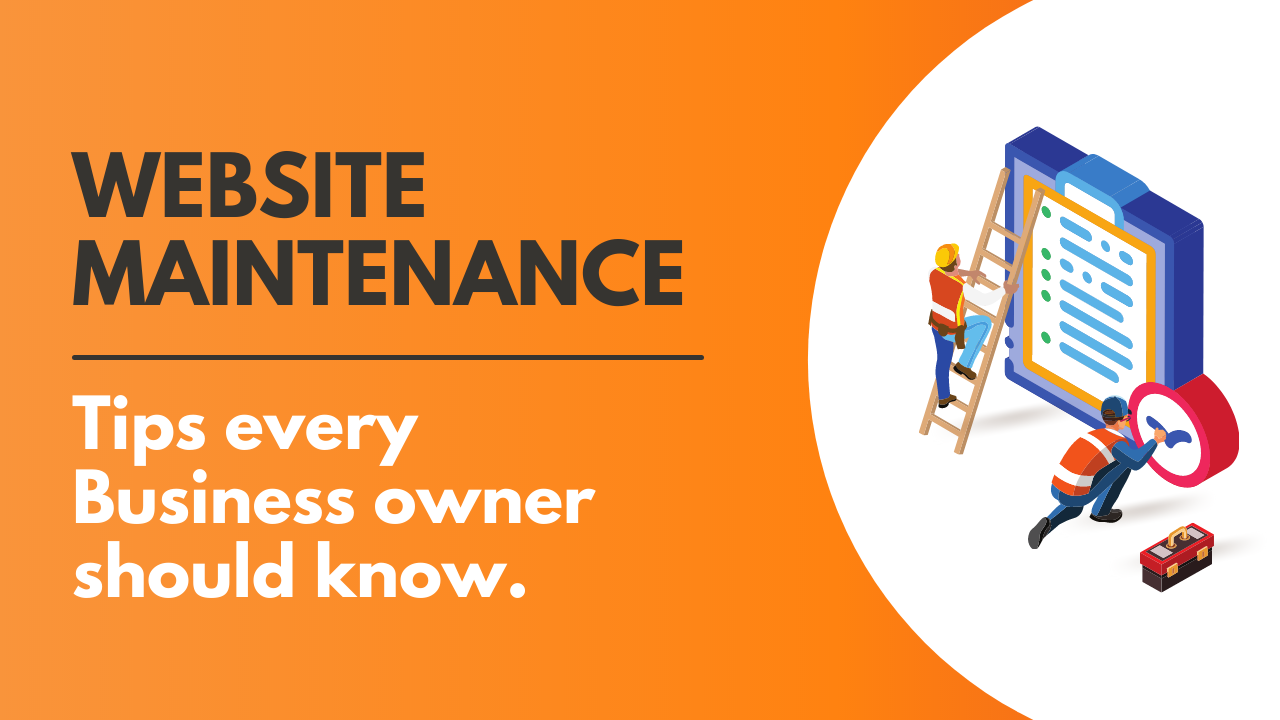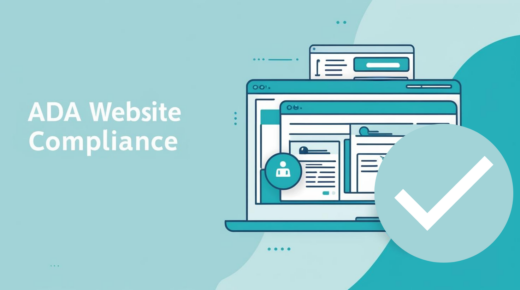While website owners do not need to keep their own sites up and running, it’s still very important for them to know how to manage their sites. Your site needs to be kept up-to-date, secure, and accessible with regular updates. Otherwise Google will not show it much traffic love. If you don’t have the resources to hire a full-time webmaster, then it’s a good idea to at least know the basics of website maintenance.
What is website maintenance?
Website maintenance is a vital part of the modern web, and having a solid website maintenance plan can mean the difference between a site that is running at peak performance and one that is, well, not. These days, site performance is more than just a convenience: it can mean the difference between a site that gets noticed and one that is never found. With search engines such as Google, Bing and Yahoo getting smarter, and the eternal arms race between hackers and defenders constantly in play, site maintenance has never been more important.
Why is maintenance important for the health of your website?
Just like your body needs regular checkups and stays at the gym to stay healthy, the same is true for your website. Whether you employ a professional or do it yourself, regular maintenance is important for keeping your site healthy. Having an active website is important for both commercial and non-commercial reasons. If your site is not maintained, it will lose Google ranking, attract lots of spam traffic and have poor SEO ratings which will lead to decreased profits and popularity.
When should you consider website maintenance?
Keeping your website up-to-date is important, but sometimes you need to focus your attention on it and not just when something breaks or it’s time to add a new feature. Depending on your business, you might want to schedule a maintenance plan only when your site has been down for an hour or when you have a lot of bugs because you can’t be up-to-date. For other businesses, it may be a good idea to schedule maintenance when things get quiet, so that you don’t disrupt any of your site’s visitors.
Who can provide your business website maintenance?
A maintenance contract is a great way to ensure that your site is running properly, and that your Internet hosting provider can quickly handle any issues that arise. Web hosting companies can offer all kinds of maintenance contracts, but you should take a close look before you commit. Some maintenance packages only provide basic services, and might not be worth the money, but others provide a lot more. For example, the company may cover security monitoring, so they can quickly fix any security holes that crop up, while others offer database backup services that are especially valuable if you have customer data stored on your site.
Website Maintenance: Steps to take
Regular website maintenance is not just about updating your site or working on your site here and there, it is also about maintaining a healthy site on a regular basis. Being proactive with website maintenance can save you headache down the road and keep Google happy too. Following a simple set of steps can keep your website healthy and looking its best so your marketing efforts are optimized for success.
1. Checking Your Website for Broken Links
Clicking on a broken link is a surefire way to ruin your online experience. The links on your website may appear to work perfectly fine for you, but there’s no telling how they’ll eventually behave for your visitors. Before going live, you should thoroughly check all of your website’s links for errors to ensure that all of the links you place on your website will take visitors to the pages they expect to land on.
2. Updating Your Website CMS
If you are thinking about updating your website CMS version (Content Management System), you may be wondering how much work updating your CMS will be. Updating a CMS can be quite simple, or it can be a very complicated process depending on two things: how outdated your current CMS is, and what kind of CMS you are updating to.
When your website design company says “You need to update your CMS”, you might dread that moment. But it doesn’t have to be scary! For technically savvy people, updating a CMS may be a fairly easy task. But for those uncomfortable with php code and databases, it can be overwhelming. Sometimes it’s best to consider hiring an expert to update your website CMS for you.
3. Update Your Website Plugins
Updating your plugins is a necessary evil that every website owner must face. It’s not the most fun thing to do, but without it, security holes and other problems can creep into your site and cause all sorts of trouble. We recommend you stay on top of your WordPress plugin updates; otherwise you can wake up to a broken website which may, or may not be recoverable!
4. Browser Compatibility Testing
Browser compatibility testing is one of the most frustrating and time-consuming steps of our web development process. User experience is very important and while there are several automated solutions for testing website compatibility, many of them do not give you the advanced features you need to make sure your visitors can access your site and convert into a lead or customer! Be sure to test for all the issues your visitors can experience.
5. Cleaning & Optimizing CSS
When you first launch a website, it’s difficult to imagine how to optimize your CSS. You might start with one file, your HTML, and everything seems fine, but then, as you add more features and functionality to your site, you start to have problems. At some point, your HTML may become too bloated to effectively describe all of the content you want to display. Further, CSS can be difficult to maintain, especially if you are not a designer. Optimizing every component of your website will make it easier to maintain while making it a more effective asset for your business.
6. Testing Mobile Access
We all know that designing and building a site with clean, easy-to-use, mobile-friendly navigation is key to a site’s success. However, if your site isn’t designed to be mobile-friendly, you’ll be missing out on a large portion of your potential audience: Mobile internet usage is up 83% from 2013, and about 50% of all web traffic will be mobile by the end of this year. This is an aspect of site design that should be taken seriously, and while there are several free online tools to help you test your website’s mobile capability, there are several factors that should be taken into consideration when deciding on a mobile testing tool.
7. Optimizing for Speed
We all know that having a fast website is important to us, but what is considered fast load speeds and what exactly are we trying to accomplish? Having a fast website is great, however, if it is not loading the correct images, or if it is not loading the correct content it may not matter how fast it is. Not sure if you are meeting Google’s expectations for fast speed times? Take a look at the many tools that are available to help you check your website load times. You can also check your Google Analytics for speed optimization information.
There are numerous factors that determine the speed at which a website loads. The top three factors in website loading times are the quality of the host, the website owner’s website maintenance schedule, and the website hosting company. If you’re unsure about the speed of your website, we can help you better understand! Nothing makes people leave a site faster than slow load times.
8. SEO Optimization
Many website owners think that Search engine optimization is part of the process of website maintenance. This is a very common question we get from our clients. Maintaining websites SEO utilities is a part of maintaining a website. This includes plugins, optimizing new content and media, etc. But managing older content and media as well as “big picture” search engine optimization is more of an SEO service.
9. Perform Test Purchases
When you update parts of your website, it’s important to make sure all functions are working properly afterward. Especially on e-commerce websites. Using test purchases is often the only way to verify that your customer-facing website is working exactly as it should. When you’re visually inspecting your website, you’re not necessarily looking for all functionality. For instance, you might be looking for a missing link on the navigation bar, or an error message that pops up when you try to add an item to your shopping cart. But if all that is functioning properly on the updated version of your site, and no one can actually place an order, you’re losing money!
10. Back Up Your Website
Just like you back-up your documents, pictures, and other important files, it’s important to back-up your website as well. If you’re running a website, chances are you’re using a hosting service to help you keep your site up and running. This is great because it ensures you’ll always have a place to host your site, but there’s one thing you should know: your hosting provider may not back-up your site for you. And losing your website can be a real pain.
If you’re using a web host that does not offer backup services, we can help!
11. Update Copyright Notices Annually
Making sure that your site’s copyright information is up-to-date is a good idea on a number of levels. First, with the rise of the Digital Millennium Copyright Act, you need to make sure that the information on your site’s copyright page is updated to reflect that you have registered your site with the U.S. Copyright Office. Most won’t have to worry about this, but it’s a safeguard against anyone who might try to claim that your site’s content is theirs.
12. Review Legal Disclaimers
Websites are not static. They are a living, breathing document that requires regular maintenance. The same goes for your website’s legal disclaimers. In fact, an increasing number of court cases have ruled in favor of litigants citing the language in a website’s legal disclaimers as the reason why they have been defrauded or injured. If your legal disclaimers are out of date and not in sync with your website’s content, you may be putting yourself at risk for costly litigation.
13. Make your site https / SSL secure
When you’re setting up a new website or maintaining an older website, one of the first things you should consider is whether or not you need an SSL certificate. What is an SSL certificate? It’s a security protocol that encrypts your website’s connection to users, and lets them know that the site is legitimate and has been verified by a trusted certification authority. “Free” SSL certificates used to be commonplace, but now that Let’s Encrypt has brought the cost down to $0, there are very few reasons not to have one.
For better search engine rankings and the peace of mind of your site visitors, go secure. Your Google Analytics and Search Console may need to be updated after you move from an HTTP site to an HTTPS secure site. Keeping track of your site and its security updates will help ensure the success of your business online.
14. Test All the Opt-in Forms on Your Website.
Sometimes website owners will contact us as they feel their website is becoming ineffective. Maybe their conversion rates are decreasing over time. They stop getting calls, leads and sales. Interestingly enough, the cause of this problem is sometimes a broken contact form or form code errors on the website. Site visitors are literally unable to submit their email, enter their information for you to contact them, or even make a purchase. This is inexcusable! It’s imperative to test your websites forms and source code after each and every update to be sure they are still working properly. You could be losing out on potential customers email addresses, contact info or even purchases.
15. Change Your Passwords regularly
You’ve probably heard about how important it is to change your passwords regularly, but why is that? It’s important because a lot of people don’t tend to write down the passwords to their online accounts, so if someone gets hold of your password, then they can easily access your accounts without you knowing. Not only that, but when you change your passwords regularly, it means that if someone DID find out your password, then it would only be good for a short period of time. For something that is as important as control of your website, it’s worth taking a few extra minutes to change your passwords regularly.
16. Keep websites contact information updated
Keeping your contact information current is a necessary part of owning a website. If you can’t be reached quickly and easily that could mean lost sales, lost customers, and frustrated friends. If you want to make sure you stay in touch and don’t miss any of the action, keep your records up to date. This will allow your clients to reach you quickly and easily. Your website is your online salesperson. It’s your online representative. Keeping it current will keep you competitive in your field.
17. Fix Broken Links and Images
If you own a website, you probably know that images are important but also break from time to time. A minor code update can wreak havoc on a website. Now, if you are like most people, you may ignore any broken image you find. This is a bad idea. All that broken image can do is confuse your audience, turning them off to your site. Luckily, there are a few really easy ways to fix broken images on your site, and the solution that works best for you will depend on what kind of website you have.
What benefits does a well maintained website provide?
A well maintained website provides many benefits. A well maintained website attracts more clients, and a well maintained website is easier for potential clients to navigate. There is a direct correlation between the popularity of a website and the amount of maintenance that is done to keep it current. A website is a form of advertising that has a much greater potential than any printed advertisement. A well maintained website is also much easier to navigate. Visitors to the website are less likely to become frustrated and leave.
If you’re searching for quick website maintenance tips or an affordable maintenance service or help with separate website maintenance tasks, get in touch! We always use clean code, design search engine friendly sites and can even keep your site maintenance current with content updates, good search ranking and any type of functionality you’re looking to achieve!





